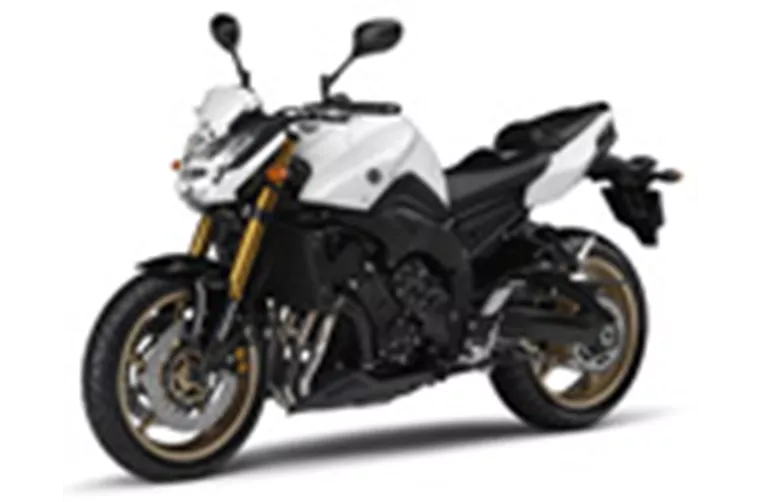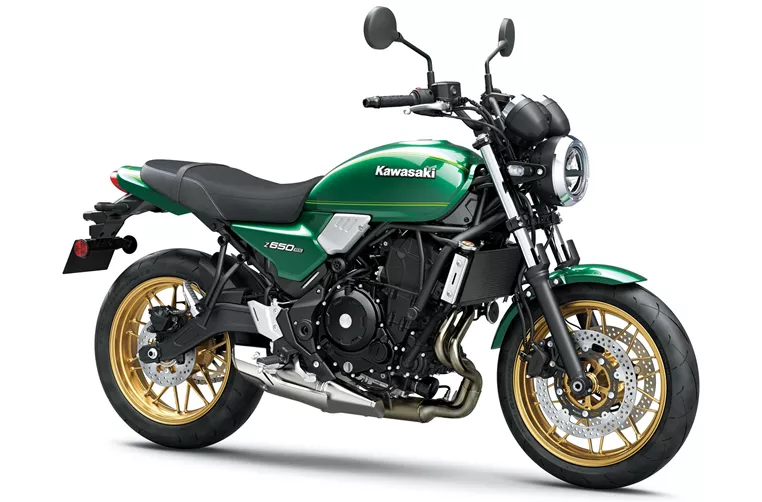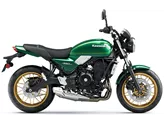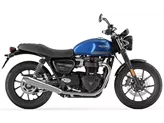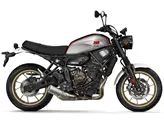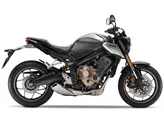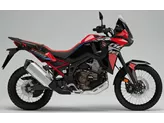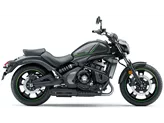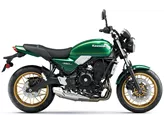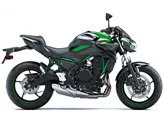Yamaha FZ-8N 2011 vs. Kawasaki Z650 RS 2022

Yamaha FZ-8N 2011
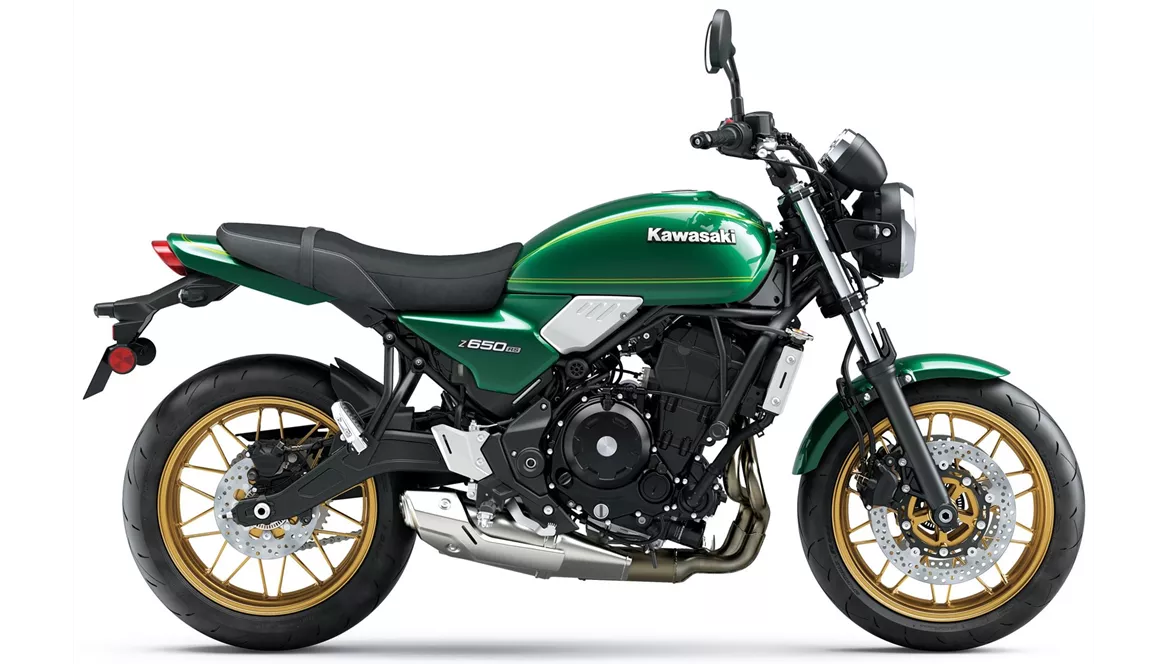
Kawasaki Z650 RS 2022
Vue d’ensemble - Yamaha FZ-8N 2011 vs Kawasaki Z650 RS 2022
In terms of engine power, the Yamaha FZ-8N 2011 has a significant advantage over the Kawasaki Z650 RS 2022. The FZ-8N boasts an engine power of 106 HP, while the Z650 RS falls behind with 68.2 HP. This means that the FZ-8N will offer a more powerful and thrilling riding experience.
In terms of torque, the FZ-8N also comes out on top with 82 Nm, compared to the Z650 RS's 65.7 Nm. The higher torque of the FZ-8N will provide better acceleration and pulling power, making it more suitable for riders who enjoy a dynamic and responsive ride.
The FZ-8N has a four-cylinder engine, while the Z650 RS has a two-cylinder engine. The additional cylinders of the FZ-8N contribute to its higher power output and smoother operation. However, the Z650 RS's two-cylinder engine may offer a more compact and lightweight design.
Both bikes feature liquid cooling, which ensures optimal engine temperature and performance. This is especially important for long rides or in hot weather conditions, as it prevents overheating and potential engine damage.
In terms of suspension, the FZ-8N is equipped with an Upside-Down telescopic fork at the front, while the Z650 RS features a telescopic fork. The Upside-Down fork on the FZ-8N is generally considered to offer better handling and stability, especially during aggressive riding or cornering.
Both bikes feature a monoshock rear shock absorber, which helps to provide a smooth and comfortable ride by absorbing bumps and vibrations from the road surface.

Yamaha FZ-8N 2011
The FZ-8N has a Deltabox frame, while the Z650 RS features a tubular frame. The Deltabox frame on the FZ-8N is known for its rigidity and stability, providing excellent handling and control. On the other hand, the tubular frame of the Z650 RS may offer a more classic and retro aesthetic.
In terms of braking, both bikes are equipped with double disk brakes at the front, ensuring powerful and reliable stopping power. This is especially important for safety, as it allows the rider to confidently control the bike in various riding conditions.
Both bikes are equipped with ABS, which is an advanced rider assistance system that prevents the wheels from locking up during braking, enhancing safety and control.
In terms of tire dimensions, both bikes have a front tire width of 120 mm and a diameter of 17 inches. However, the FZ-8N has a wider rear tire with a width of 180 mm, compared to the Z650 RS's 160 mm. The wider rear tire of the FZ-8N may offer better traction and stability, especially during aggressive riding or cornering.
The wheelbase of the FZ-8N is 1460 mm, while the Z650 RS has a slightly shorter wheelbase of 1410 mm. A longer wheelbase generally contributes to better stability and straight-line performance, while a shorter wheelbase can result in more agile and nimble handling.
In terms of seat height, the Z650 RS has a slightly higher seat height of 820 mm, compared to the FZ-8N's 815 mm. This may be a factor to consider for riders with shorter inseams, as a lower seat height can provide better stability and confidence at stops.
The kerb weight of the FZ-8N is 211 kg, while the Z650 RS is lighter at 185 kg. A lighter weight can contribute to better maneuverability and agility, especially in urban environments or tight corners.

Kawasaki Z650 RS 2022
Both bikes have a fuel tank capacity of 15 liters for the Z650 RS and 17 liters for the FZ-8N. The larger fuel tank capacity of the FZ-8N may provide a longer riding range before needing to refuel.
In terms of strengths, the FZ-8N offers a stable and stable ride, thanks to its Deltabox frame and Upside-Down telescopic fork. It also has a large variety of accessories available, allowing riders to customize and personalize their bike. Additionally, the FZ-8N offers acceptable performance, with its powerful engine and torque.
On the other hand, the Z650 RS stands out with its perfectly realized retro design, featuring analogue displays that add to its classic appeal. It also offers a lively engine and accessible handling, making it suitable for riders of all skill levels. The Z650 RS features powerful brakes for confident stopping power and comfortable ergonomics for long rides. The adjustable levers add to the bike's versatility, allowing riders to customize the controls to their preferences. Overall, the Z650 RS is a real eye-catcher on the road.
In terms of weaknesses, the FZ-8N has been reported to have a footrest detent insert that sets too early, causing unsteadiness in the chassis and scraping on the ground. Additionally, some riders may find the exhaust design of the FZ-8N to be unattractive. The FZ-8N has also been described as a bit cumbersome, which may affect its maneuverability in certain situations.
The Z650 RS's only weakness mentioned is a slightly softer sound, which may not appeal to riders seeking a more aggressive and sporty exhaust note.
In conclusion, the Yamaha FZ-8N 2011 and the Kawasaki Z650 RS 2022 offer different strengths and weaknesses. The FZ-8N excels in terms of engine power, torque, and stability, while the Z650 RS stands out with its retro design, accessible handling, and comfortable ergonomics. Ultimately, the choice between the two will depend on the rider's preferences and priorities, whether they prioritize power and performance or classic aesthetics and comfort.
Caractéristiques techniques Yamaha FZ-8N 2011 par rapport à Kawasaki Z650 RS 2022
Avantages et inconvénients en comparaison
Avantages et inconvénients en comparaison
Yamaha FZ-8N 2011
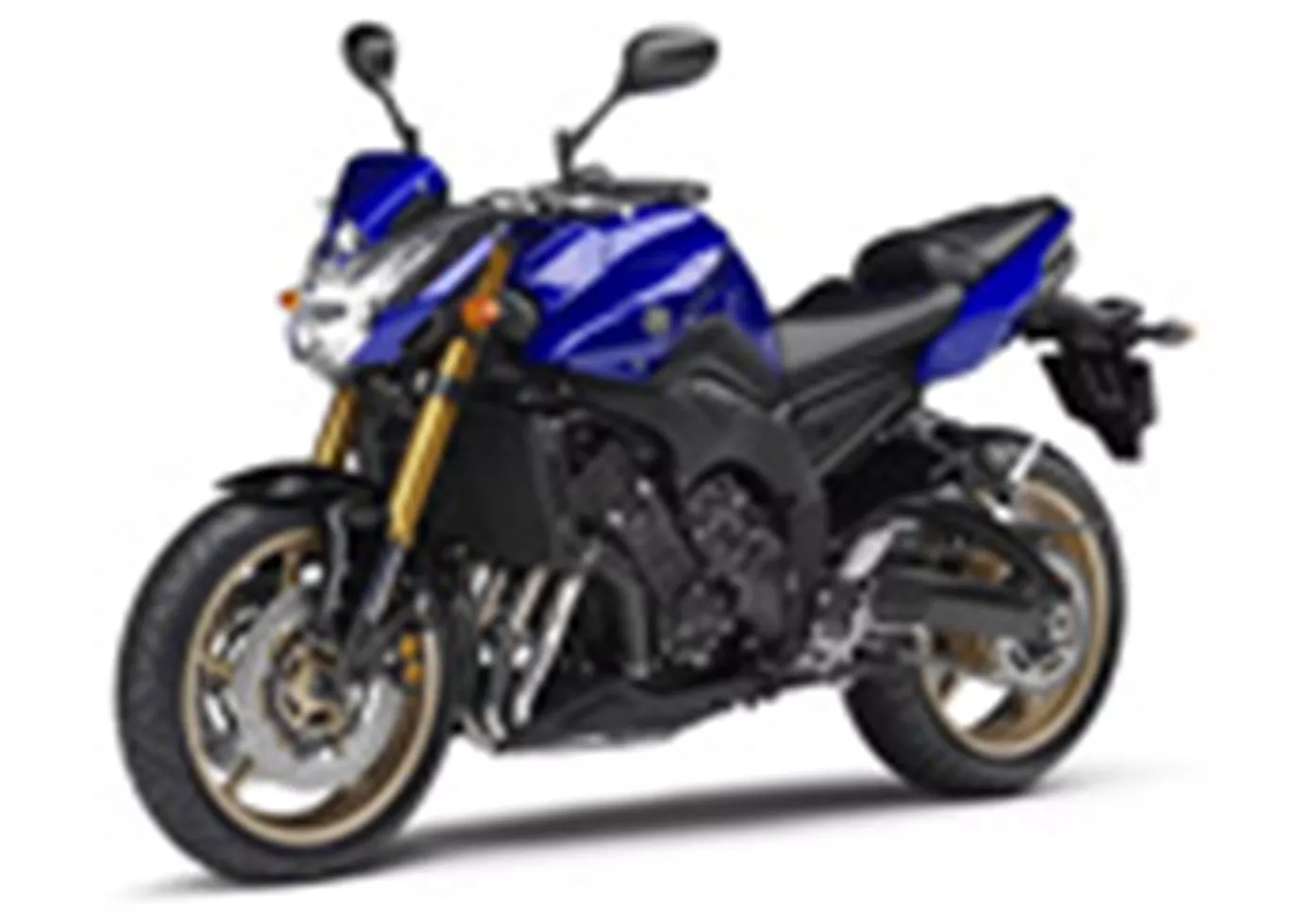
Mais comme dans la vie, on ne peut pas diaboliser le concept des "3/4 litres approximatifs" en feuilletant rapidement les fiches techniques de la FZ-8. Ce serait d'ailleurs bien dommage, car la 8 nous a procuré beaucoup de plaisir sur les 3200 kilomètres parcourus jusqu'à présent. Contrairement aux faits, la 800 est même probablement le meilleur choix pour le pilote moyennement ambitieux.
Kawasaki Z650 RS 2022
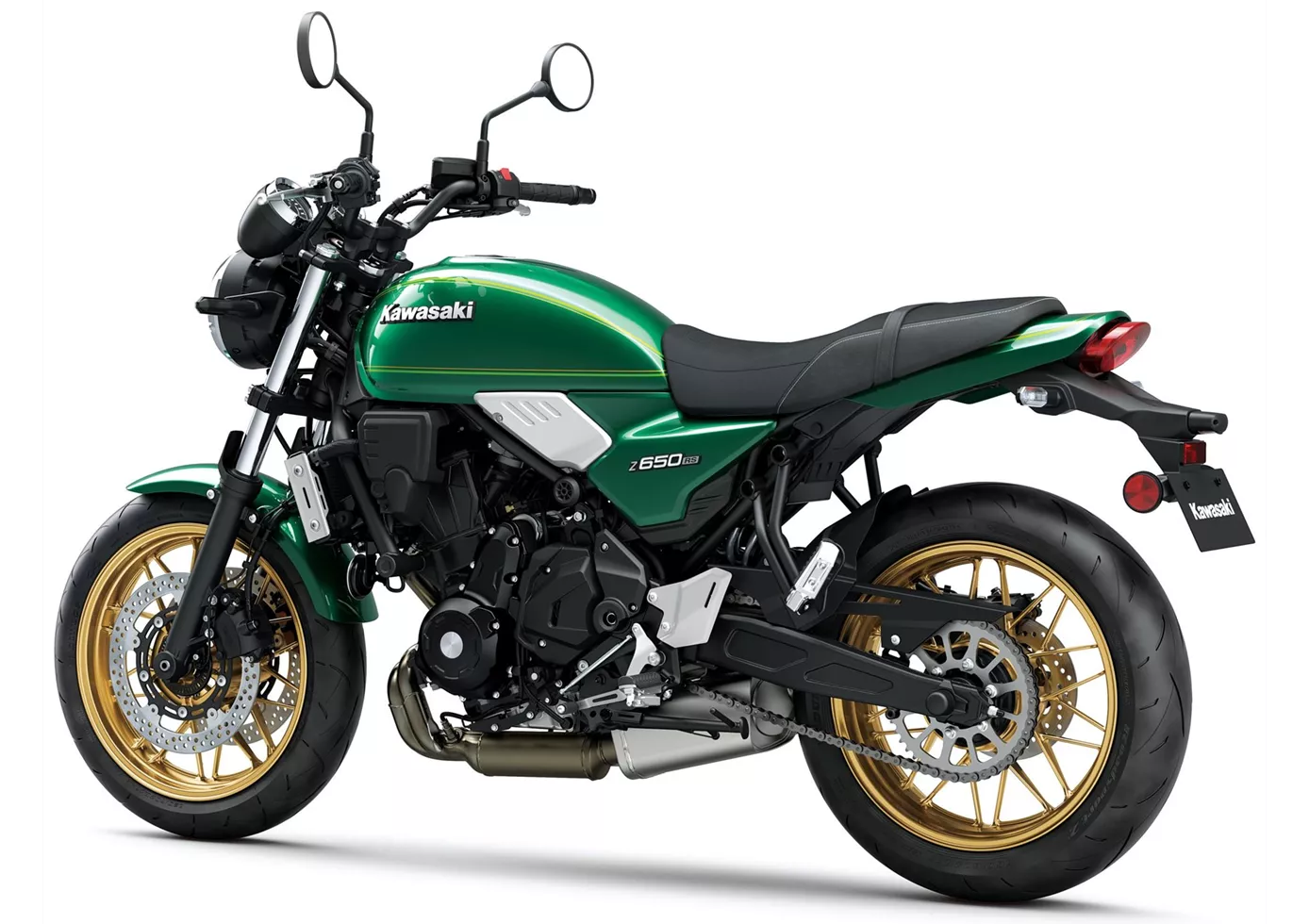
Avec la RS, Kawasaki prouve qu'elle maîtrise l'art des motos rétro. On oublie tout de suite que sous la jolie robe se cache la Z650 normale, car grâce aux bons détails, le design rétro s'est imposé de manière convaincante. En selle, on se réjouit de l'accessibilité que l'on connaît de sa sœur technique. Une moto rétro qui fera le bonheur des débutants comme des motards expérimentés !
Comparaison des prix Prix moyen du marché Yamaha FZ-8N vs Kawasaki Z650 RS
There are a few key differences between a Yamaha FZ-8N 2011 and a Kawasaki Z650 RS 2022. In terms of price, the actual average price of a Kawasaki Z650 RS 2022 is about 30% higher. A Yamaha FZ-8N 2011 experiences a loss of 1,060 USD in one year of ownership. This is offset by a loss of 300 USD for a Kawasaki Z650 RS 2022. Compared to Kawasaki Z650 RS 2022 there are less Yamaha FZ-8N 2011 bikes available on the 1000PS.de Marketplace, specifically 13 compared to 34. It takes less time to sell a Yamaha FZ-8N with 70 days compared to 146 days for a Kawasaki Z650 RS. Since model year 2010 1000PS.de editors have written 11 reviews for the Yamaha FZ-8N and 12 reviews for the Kawasaki Z650 RS since model year 2022. The first review for the Yamaha FZ-8N was published on 1/27/2010 and now has more than 8,200 views. This compares to more than 39,300 views for the first review on Kawasaki Z650 RS published on 9/27/2021.
